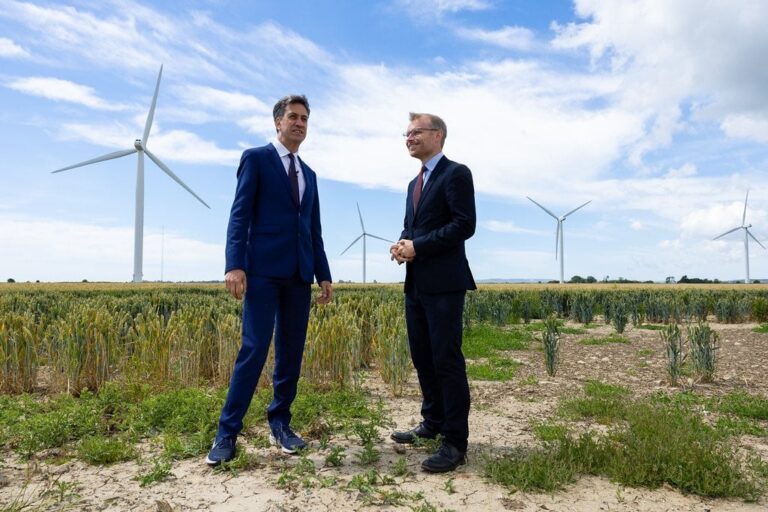Ed Miliband has spoken out against the misconception that solar farms pose a threat to national food security.
Miliband, the newly appointed Secretary of State for the Department of Energy Security and Net Zero (DESNZ), told the House of Commons last week (July 18) that the government will proceed “not on the basis of myths and false information, but on the basis of evidence ” .
He cited estimates that ground-mounted solar would take up 0.1% of UK land by 2022, and said his recent decision to grant development consents (DCOs) for three large solar farms was supported by the National Farmers’ Union (NFU).
To support these points, Solar Energy UK has published a series of factsheets debunking common arguments against new solar developments. The trade association wants answers to the question of how the location of solar farms is chosen, how much disruption they cause in the country and what evidence there is that they threaten national food security.
Solar farms and farmland was produced with help from Dr Jonathan Scurlock, the NFU’s lead advisor on renewable energy and climate change. In addition, NFU president Tom Bradshaw backed the solar sector, saying: “It’s a small amount of land that’s being taken out of production.”
He added: “Solar farms offer farmers an attractive diversification income opportunity if we find the right balance between food security and climate ambitions. National planning guidelines and NFU policy both express a preference for large-scale solar farm development to be located wherever possible on lower quality agricultural land, avoiding the most productive and versatile soils.’
In May, Scotland’s NFU signed an affinity agreement with Iqony Solar Energy Solutions (SENS), which will see only a marginal amount of productive agricultural land used for solar installations.
The site selection fact sheet notes that the location is also determined by the ability to connect to the national electricity transmission system, irradiation levels and topography. The agricultural land fact sheet recognizes that, under the policy, land type should not be a predominant factor in determining the suitability of a site for solar energy development.
The factsheets are mainly aimed at MPs, with Solar Energy UK intending to “promote understanding, trust and consistency in the way planning authorities consider planning applications for solar farms”.
Solar Energy UK said false and misleading claims about the impact of solar developments were “even being made in parliament”.
Chief executive of Solar Energy UK Chris Hewett said: “Solar farms keep British farmers going while producing some of the cheapest energy there has ever been. Without them, energy bills would be even higher – for farms as much as for homes. Solar farms can provide reliable income, keeping UK farms profitable and safeguarding domestic food supplies.”
In addition to the factsheets, Solar Energy UK has published a position statement on archaeological remains which it says promotes a proportionate assessment of solar energy development. The trade association plans to publish more fact sheets on biodiversity and battery energy storage systems.


